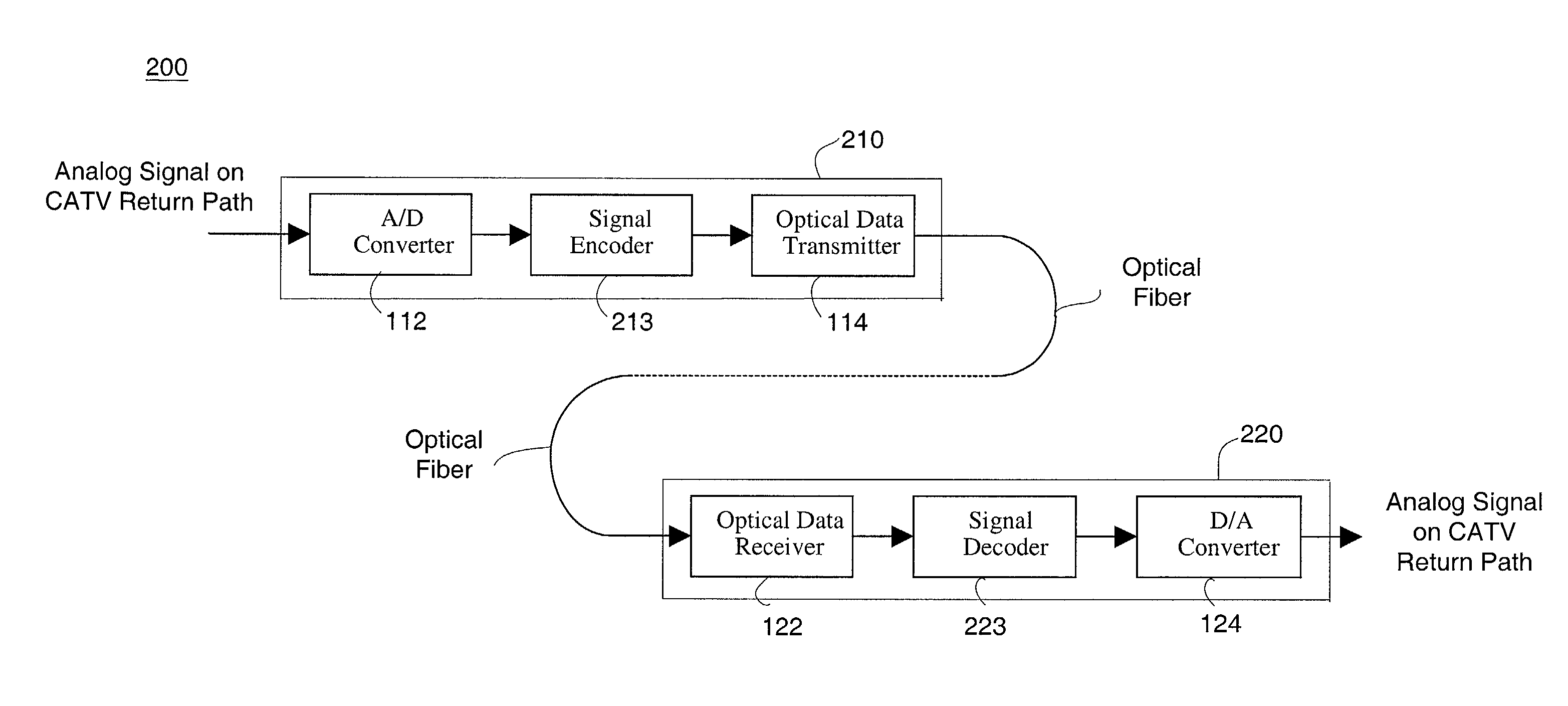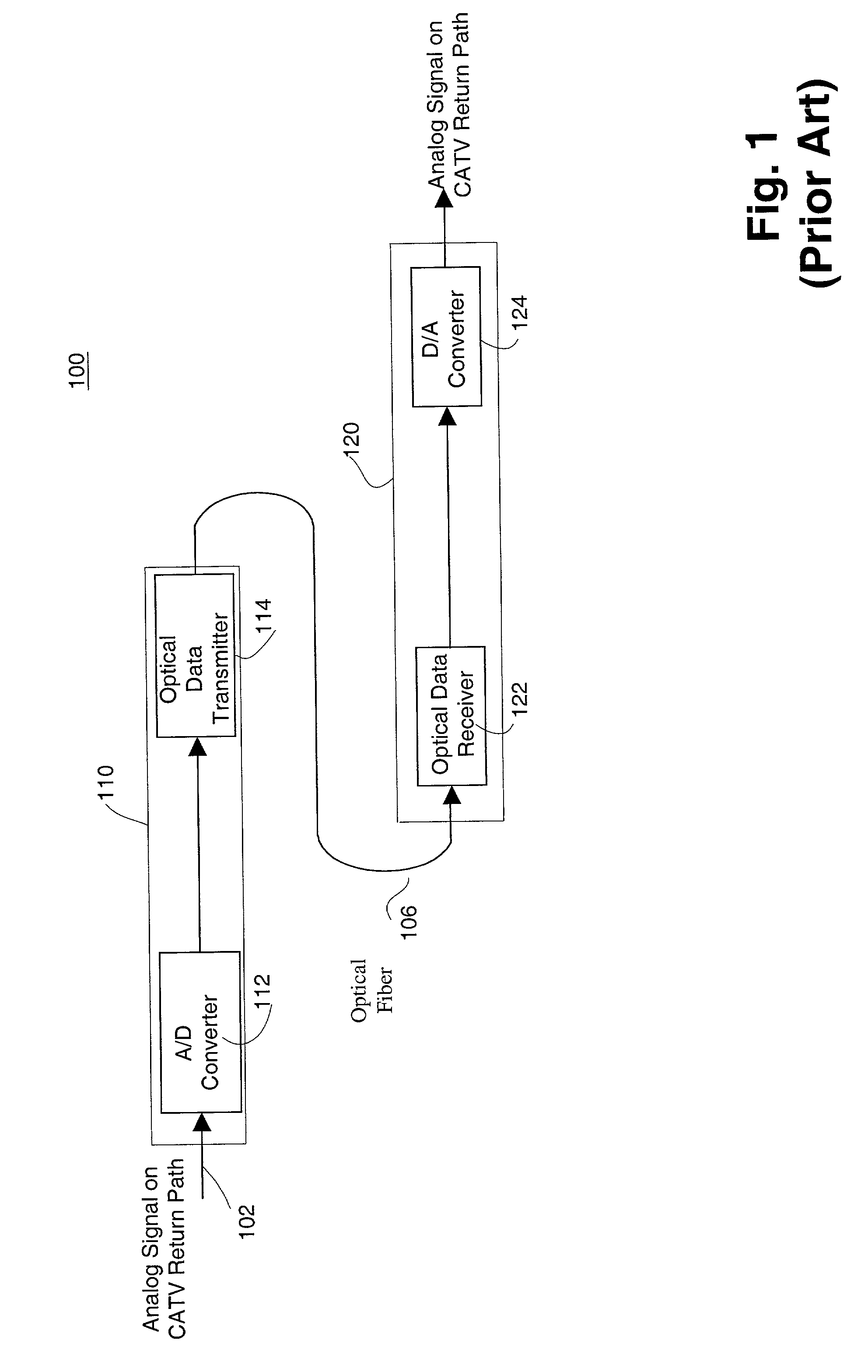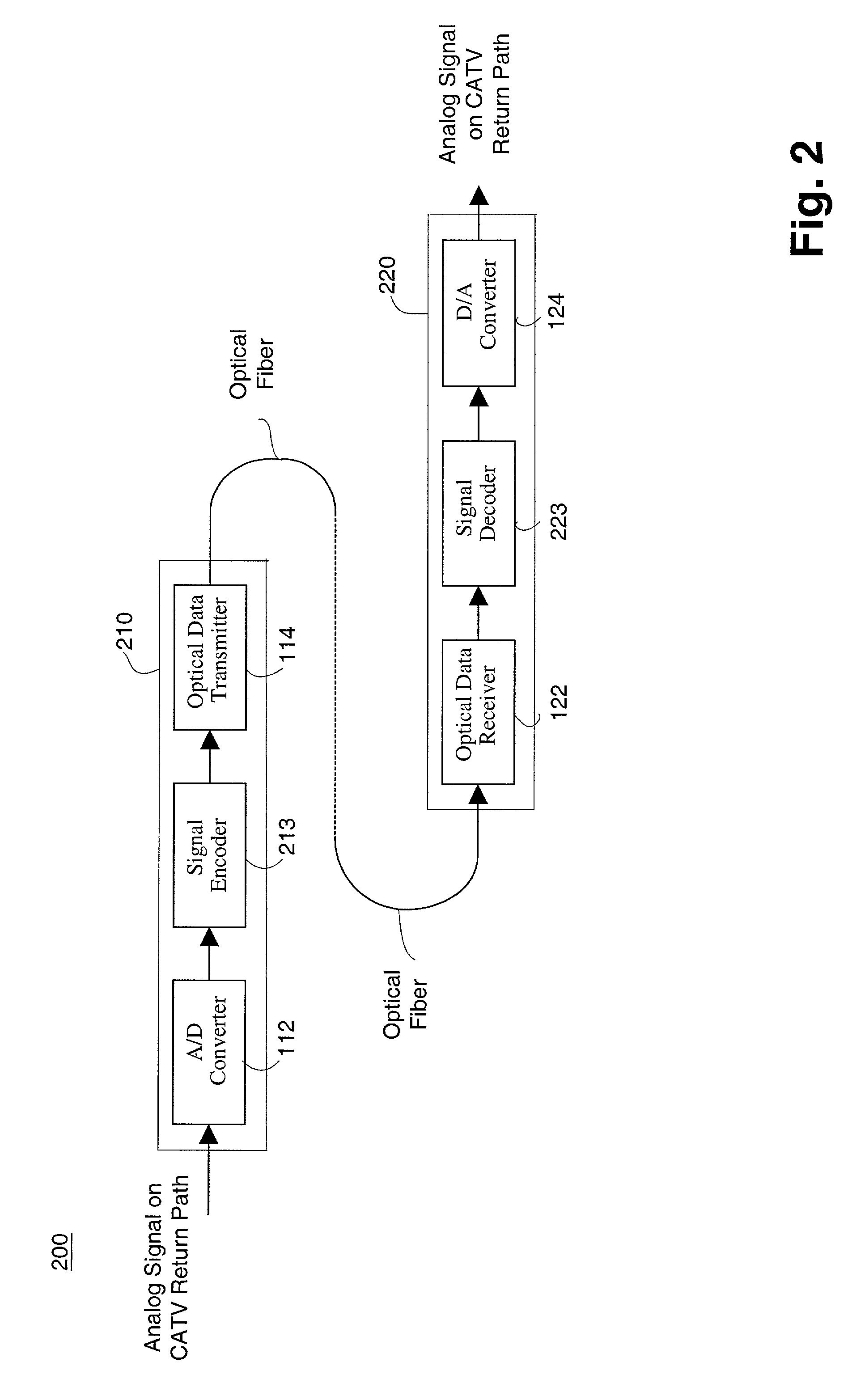Efficient transmission of digital return path data in cable television return path
a technology of return path and digital return path, which is applied in the direction of two-way working system, selective content distribution, television system, etc., can solve the problems of high cost of such high-speed optical equipment, inability to take information back from subscribers, and limit the bandwidth of optical equipment, so as to reduce the number of bits that are transported, suitable for high-speed operations, and the accuracy of the analog return signal is not substantially compromised
- Summary
- Abstract
- Description
- Claims
- Application Information
AI Technical Summary
Benefits of technology
Problems solved by technology
Method used
Image
Examples
Embodiment Construction
[0023]FIG. 2 is a block diagram depicting a CATV return path 200 according to one embodiment of the present invention. At the CATV return path transmitter 210, a signal encoder 213 is coupled to receive and encode the data signal output of the A / D converter 112. The encoded data signal (output by the encoder 213) is provided to the optical transmitter 114 for transmission to a hub 220. At the hub 220, the signal receiver 122 recovers and generates a local replica of the encoded data signal, and a signal decoder 223 is coupled to receive and decode the encoded data signal. The output of the decoder 223, which is a decoded data signal, is provided to a D / A converter 124 for conversion into analog signals. In this embodiment, the signal encoder 213 and signal decoder 223 allow digital data to be transmitted across the optical link at a lower rate than N*F bits per second (where N is the number of bits and F is the sampling frequency of the A / D converter 112) without significant loss of...
PUM
 Login to View More
Login to View More Abstract
Description
Claims
Application Information
 Login to View More
Login to View More - R&D
- Intellectual Property
- Life Sciences
- Materials
- Tech Scout
- Unparalleled Data Quality
- Higher Quality Content
- 60% Fewer Hallucinations
Browse by: Latest US Patents, China's latest patents, Technical Efficacy Thesaurus, Application Domain, Technology Topic, Popular Technical Reports.
© 2025 PatSnap. All rights reserved.Legal|Privacy policy|Modern Slavery Act Transparency Statement|Sitemap|About US| Contact US: help@patsnap.com



